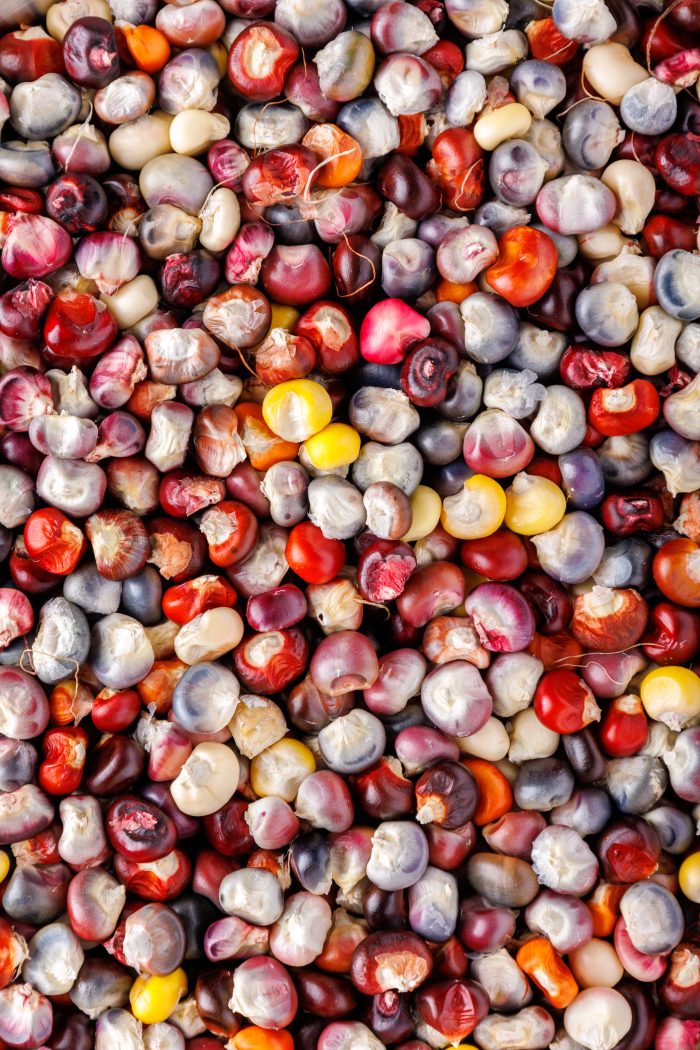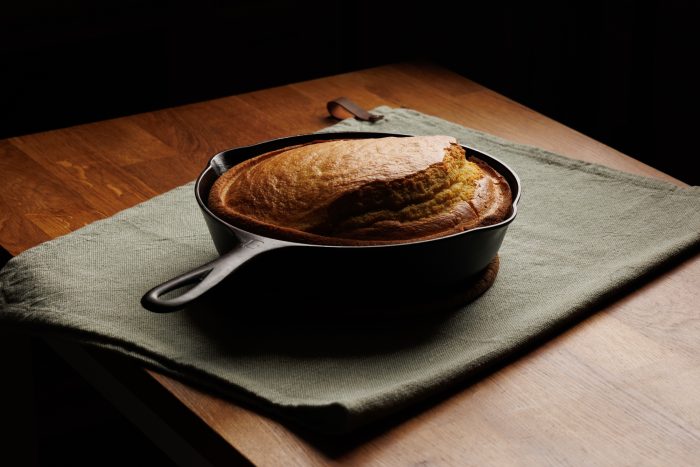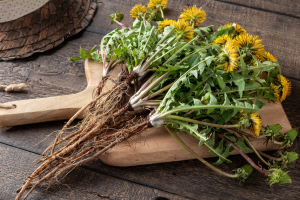Grain corn, or dent corn, is an ancient and versatile staple that has been a fundamental part of human diets for centuries. From tortillas in Mexico to polenta in Italy, corn has been transformed into a variety of delicious dishes. But before it becomes your next culinary creation, it starts as whole kernels.

Difference between grain corn and sweet corn
Grain corn and sweet corn may come from the same family, but they are distinct in taste, texture, and purpose. Sweet corn, as the name implies, is cultivated for its high sugar content, making it tender and delicious when consumed fresh. It’s typically harvested when the kernels are still in their milky stage and enjoyed as a sweet and crisp vegetable.
In contrast, grain corn, also known as field corn or dent corn, has a lower sugar content and is grown primarily for its starchy kernels, which are used for animal feed, processed into cornmeal, corn flour, or for making products like corn syrup and ethanol.
Growing Grain Corn
Growing grain corn is rewarding and a sustainable choice for several reasons. First, it allows you to produce your own staple food which reduces your reliance on store-bought products. Grain corn is relatively low-maintenance, making it a manageable addition to your garden, even for those with limited space.
Additionally, growing your own grain corn gives you control over the quality and source of your food, ensuring it’s free from pesticides and additives. Harvesting and storing grain corn from your garden can also contribute to food security, allowing you to have a homegrown, long-lasting food supply.
Planting usually begins in the spring when the soil temperature reaches around 50-86°F (10-30°C). It’s essential to choose a sunny location with well-drained soil and to provide adequate spacing between rows to ensure good air circulation.
Grain corn is a relatively heavy feeder, so preparing the soil with organic matter and providing balanced nutrients is important for a successful harvest. As the corn matures, tassels develop at the top, and the kernels fill out on the cobs. When the kernels are hard and the moisture content is around 20%, it’s time to harvest.
Storing Grain corn after harvest
The primary goal is to protect the corn from moisture, pests, and temperature fluctuations. Before storing, ensure that the corn kernels are adequately dried, typically to a moisture content of around 13-15%. We hang pull the husks away from the cob and using twine, hang the corn cobs to dry. Once the cobs are dry, you can hold them over a bowl and twist your hands over the cob like you’re wringing out a towel. The kernels will fall right off the cob.
Properly cleaned and sorted corn should be placed in airtight containers or bins designed for grain storage. These containers should be stored in a cool, dry, and well-ventilated location, preferably on an elevated, clean, and pest-resistant surface. Regular monitoring of temperature and moisture levels is essential to prevent mold, spoilage, or insect infestations.

Milling grain corn + uses
The milling process typically involves feeding the dried and cleaned corn into a mill, where it is ground into the desired consistency, ranging from fine cornmeal to coarser corn grits. The coarseness of the grind can be adjusted based on the specific culinary application.
Milling grain corn at home allows you to have control over the freshness and quality of the resulting product, whether you’re making cornbread, polenta, tortillas, or any other dish.
Milled corn is perfect for baking. Use it to make cornbread, corn muffins, and corn pancakes. It adds a delightful flavor and texture to your baked goods. Milled corn can also be used to prepare hearty corn porridge, a nourishing and filling breakfast dish enjoyed in many cultures.
In the southern United States, coarsely milled corn is transformed into comforting dishes like grits. Serve them with butter, cheese, or as a side dish with shrimp or bacon.
Finely milled corn can be used to create cornstarch, a valuable thickening agent for soups, sauces, and desserts.
Cornmeal can be cooked into a creamy polenta, a traditional Italian dish. Polenta pairs beautifully with tomato sauce, cheese, mushrooms, or any of your favorite toppings.
Masa harina, a fine corn flour, is the key ingredient for making tortillas and tamales.
Whether you’re baking, making traditional dishes, or experimenting with new recipes, freshly milled corn provides a depth of flavor and texture that store-bought alternatives can’t match.
Also Read: Three Sisters Gardening Method
Growing grain corn in your garden is more than just a practical choice; it’s a gateway to a deeper understanding of self-sufficiency, sustainability, and the remarkable journey from seed to table. Whether you have a small backyard or a spacious plot, the cultivation of grain corn can provide you with an opportunity to take control of your food supply, reduce your environmental footprint, and embrace the age-old traditions of nurturing and harvesting one of the world’s essential crops.
Moreover, it fosters a connection to the very roots of our agricultural heritage and empowers you to make informed choices about the source and quality of your staple foods.
After you grow your first plot of grain corn you’ll want to grow it every year! Be sure to save a few kernels each year so you’ll always have fresh seeds to plant.




